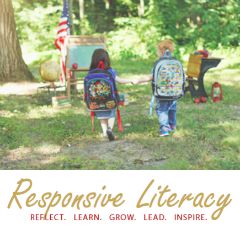It was a proud mother moment, for sure. Mrs. Carrera was so proud of the 1.5 minutes of stamina that her kindergartners had today that she left me a message to see if I could come celebrate it. Of course as soon as I heard the message, I ran right in there. She was so proud of her little guys, as was I, but I was soon distracted by the anchor chart in the back of the room. It was David! I love David. I walked over to take a closer look... and saw PBIS expectations. I suddenly realized something big.
No, David is a mentor text!
Think about it... If you start to think about all the things that, throughout the year, David can teach us, you will soon see it as one of the well loved books that keeps coming back, again and again and again. Let me list a few mini lessons off the top of my head:
- Fluency lessons: Just imagine the fluency you can model with all the yelling, text sizes, and punctuation in that book.
- Inferring character's feelings: Our little friend David goes through quite the emotional changes through the course of the book. Just look at his face and body language- they say so much!
- Themes: There are few books that teach the theme of compassion and forgiveness like No, David. Just think about the end of the book when David's teacher gives him a gold star, even after his naughtiness. Or perhaps when his friends are waiting to play with him, despite his behavior in school. What a great lesson for our kids.
- Character Development: Read a few of the David books together, and you have a character study.
- Personal Narrative Genre: This is an excellent example of a personal narrative. David Shannon wrote the stories about himself as a child. What a great way to get kids writing stories that are true about them!
- Vocabulary: The reading level for the book is in the first grade band, but there are a few good words that could be vocabulary words. "NO! It's not my fault! I didn't mean to! It was an accident!" Ask any young kid to define "accident" and you have a good discussion. :)
- 3 Ways to Read a Book: The text is nice and simple to read, the pictures practically tell the story all on their own, and the kids love to retell this one!
- Rereading Text: Kids are always so hesitant to read texts more than once, but for some reason David allows them to do that. The David books are often the ones that fall apart due to overuse.
- Voice: One of our 6 Traits of good writing is found abundantly in the words of the No, David! books.
I walked into their rooms and just saw all the possibilities that lay ahead this year by using that book, over and over again. Mentor texts can be books that are short and simple, but have enough heart to make them unforgettable to our students. When picking books for your read alouds this year, think about what they can offer during your mini lessons during Reading/ Writing Workshop.
One other nice touch? Mrs. Surma made her anchor chart with the 3 Ways to Read a Book, and around the three she put a picture of each of her kids WHILE READING. What a great way to hit home that they are all readers, right from the start.
Yes, Kindergarten!!!




















